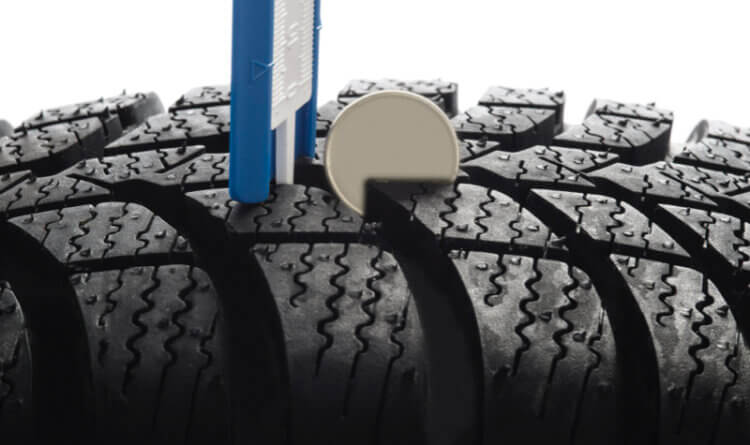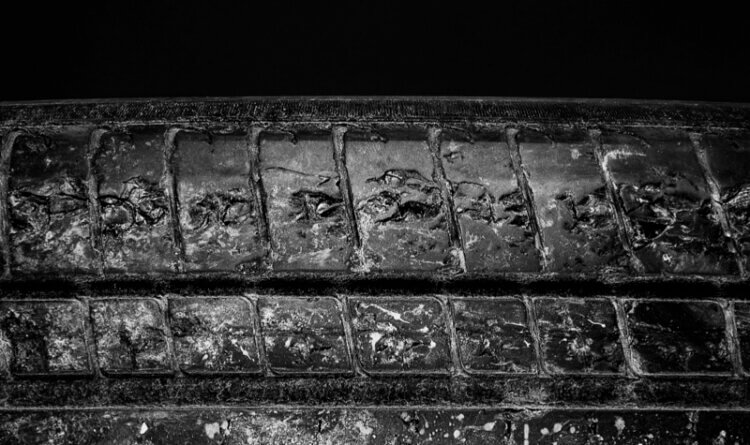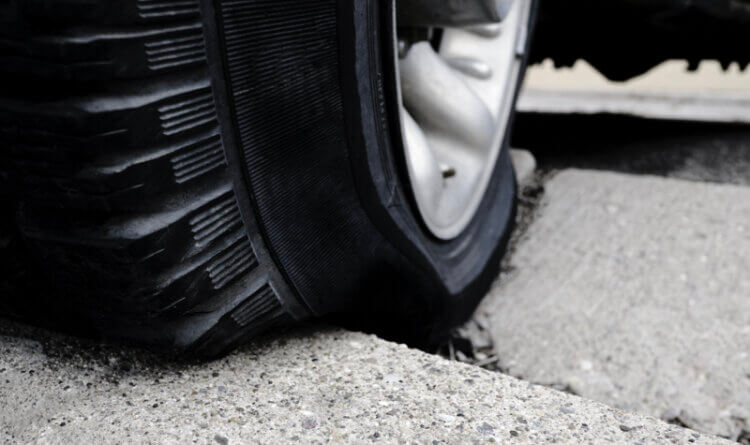Signs it’s time to replace your 4×4 tyres
6 Critical Signs Your Car Needs New Tyres
Maintaining your car’s tyres is crucial for safety, efficiency, and overall driving performance. Ignoring tyre issues can lead to poor handling, longer braking distances, and dangerous blowouts. Explore the Signs it’s time to replace your 4×4 tyres.
Signs it's time to replace your 4x4 tyres - Tread Depth Falling Below Legal Limits
The tread depth on your tyres is crucial for maintaining traction on the road, especially in wet or icy conditions. In the UK, the legal minimum tread depth is 1.6mm. However, tyres should be replaced when the tread reaches 3mm for optimal performance and safety.
How to check tread depth:
- Tread Wear Indicator Bars: Modern tyres have small bars built into the tread pattern. If these bars are level with the tread, it’s time for a replacement.
- Penny Test: Place a coin into the grooves of the tread. If you can see the outer band, your tread is too low.
Tyres with low tread depth can reduce your car’s ability to grip the road, increase stopping distances, and raise the risk of aquaplaning.

Signs it's time to replace your 4x4 tyres - Uneven Tyre Wear Patterns
Uneven tyre wear strongly indicates that your tyres require attention. Several factors can cause this issue, including improper alignment, incorrect inflation, or suspension problems.
Common Types of Uneven Wear:
- Centre Wear: Indicates over-inflation.
- Edge Wear: Indicates under-inflation or poor wheel alignment.
- Patchy Wear: Often caused by unbalanced wheels.
Regular tyre rotation and wheel alignment can help prevent uneven wear. However, if the wear is severe, it’s time for new tyres.

Cracks and Bulges in the Sidewall
The sidewalls of your tyres are under a lot of stress. If you notice visible cracks, cuts, or bulges in the sidewall, it’s a warning sign of potential tyre failure.
- Cracks: These may result from ageing, exposure to extreme temperatures, or poor maintenance.
- Bulges: Are often caused by impact damage, such as hitting a pothole or curb. They indicate weakened internal structures, which increases the risk of a blowout.
Sidewall damage is dangerous and usually requires immediate tyre replacement.
Signs it's time to replace your 4x4 tyres - Persistent Vibrations While Driving
Some vibration is normal, especially on rough roads. However, excessive or unusual vibrations can indicate tyre problems.
Possible Causes of Vibration:
- Tyres Out of Balance: This can cause uneven tyre wear and excessive shaking.
- Damaged tyres: Internal tyre damage can lead to vibrations, even if the exterior looks intact.
- Wheel Alignment Issues: Misaligned wheels can cause the tires to wear unevenly and shake while driving.
Ignoring these signs can lead to long-term damage to your car’s suspension and steering components.

Age of the Tires
Even if your tyres seem in good condition, their age can impact their performance. As time passes, the rubber compounds in tyres degrade, decreasing grip and increasing the risk of failure.
When to Replace Old Tires:
- Tyres Older Than 6 Years: Even if the tread seems sufficient, tyres older than six years are more likely to experience wear and cracking.
- Check the DOT Code: The last four digits on the DOT code indicate the tyre’s manufacturing date. For example, a code reading “2318” means the tire was made in the 23rd week of 2018.
Regularly inspecting the age of your tires is crucial to ensure safe and reliable driving.
Signs it's time to replace your 4x4 tyres - Slow Leaks or Frequent Loss of Pressure
If you find yourself needing to inflate your tyres frequently, it could be a sign of several potential issues, such as:
- Punctures: Small punctures may lead to slow air loss that can go unnoticed but gradually weaken the tyre over time.
- Damaged Valve Stems: Damage to the valve stem is a common cause of slow leaks.
- Bead Leaks: Air may escape where the tyre meets the rim if the seal is compromised.
Tires that consistently lose pressure require immediate attention and, in many cases, should be replaced to prevent further damage.

Secure shopping
We understand at 4×4 Tyres that your security when shopping online is paramount. We subsequently go to extreme lengths to ensure that you and your data are safe by using market leading SSL Encryption.
Conclusion
Remember these important signs to ensure your tyres are safe and roadworthy. Regularly check for tread wear, uneven patterns, cracks, and vibrations. Keep an eye on the age and inflation levels of your tyres to prevent accidents and costly repairs. Make tyre maintenance a regular part of your routine and replace tyres when you notice any of these signs to ensure optimal safety and performance on the road.